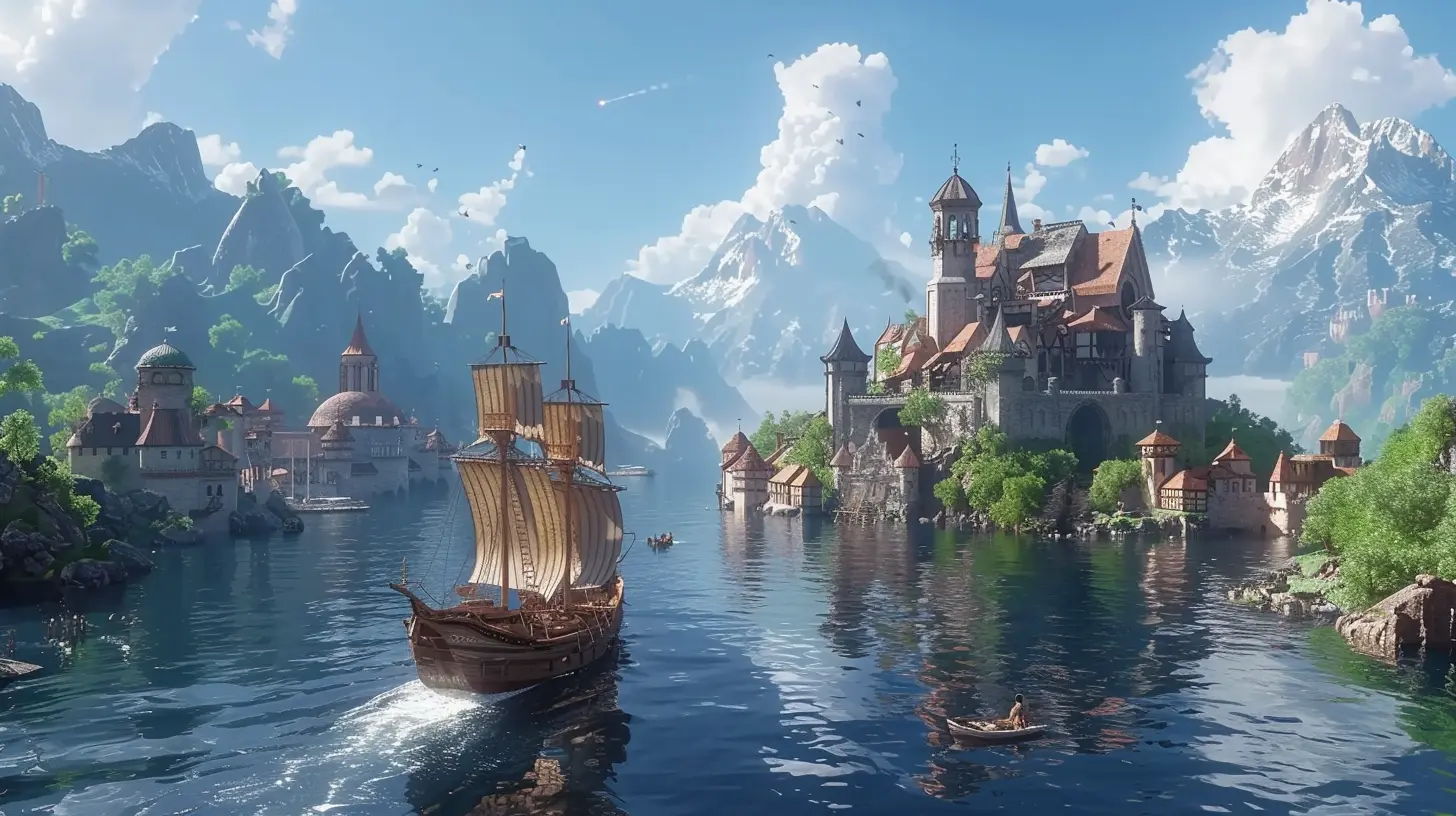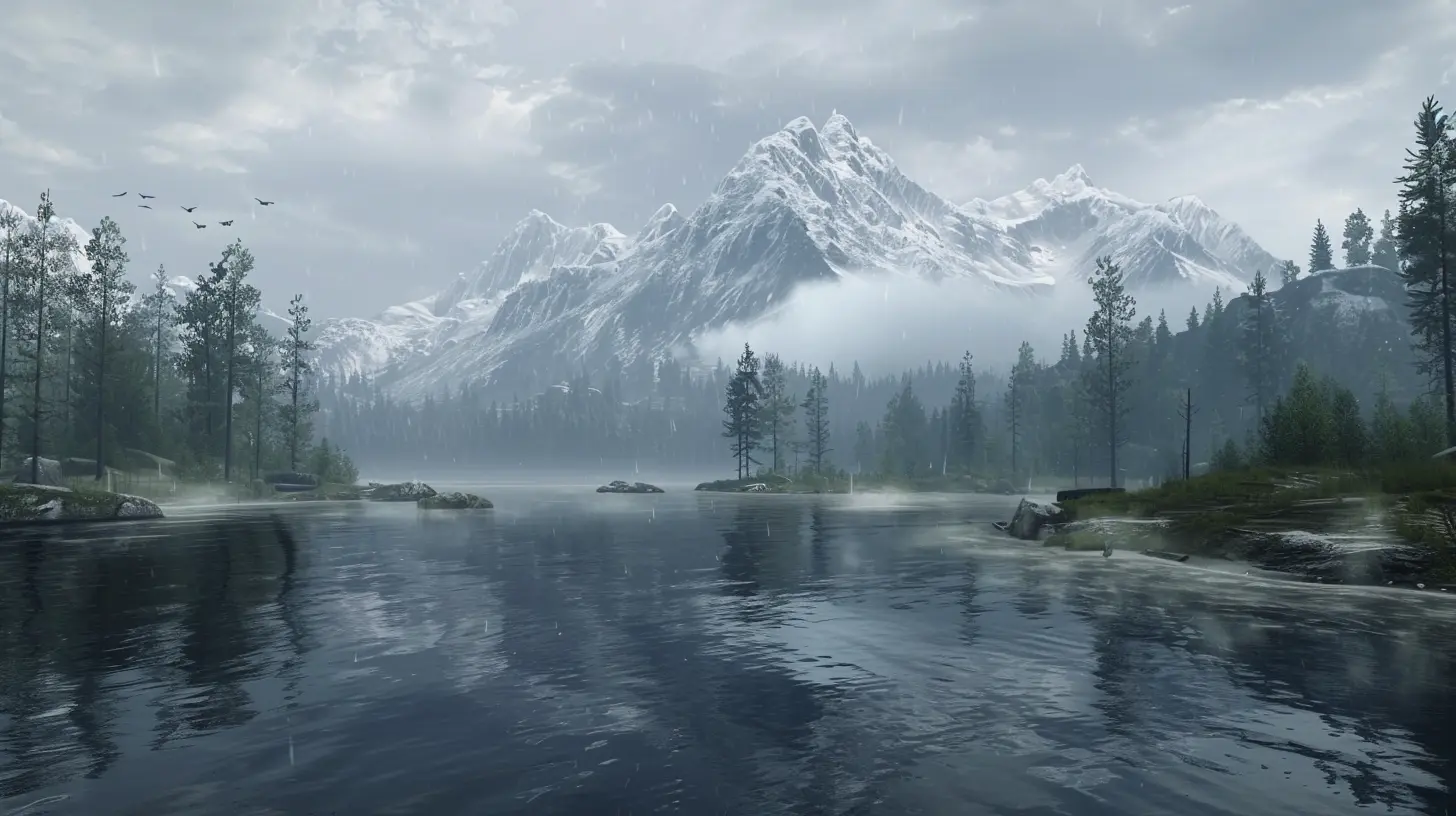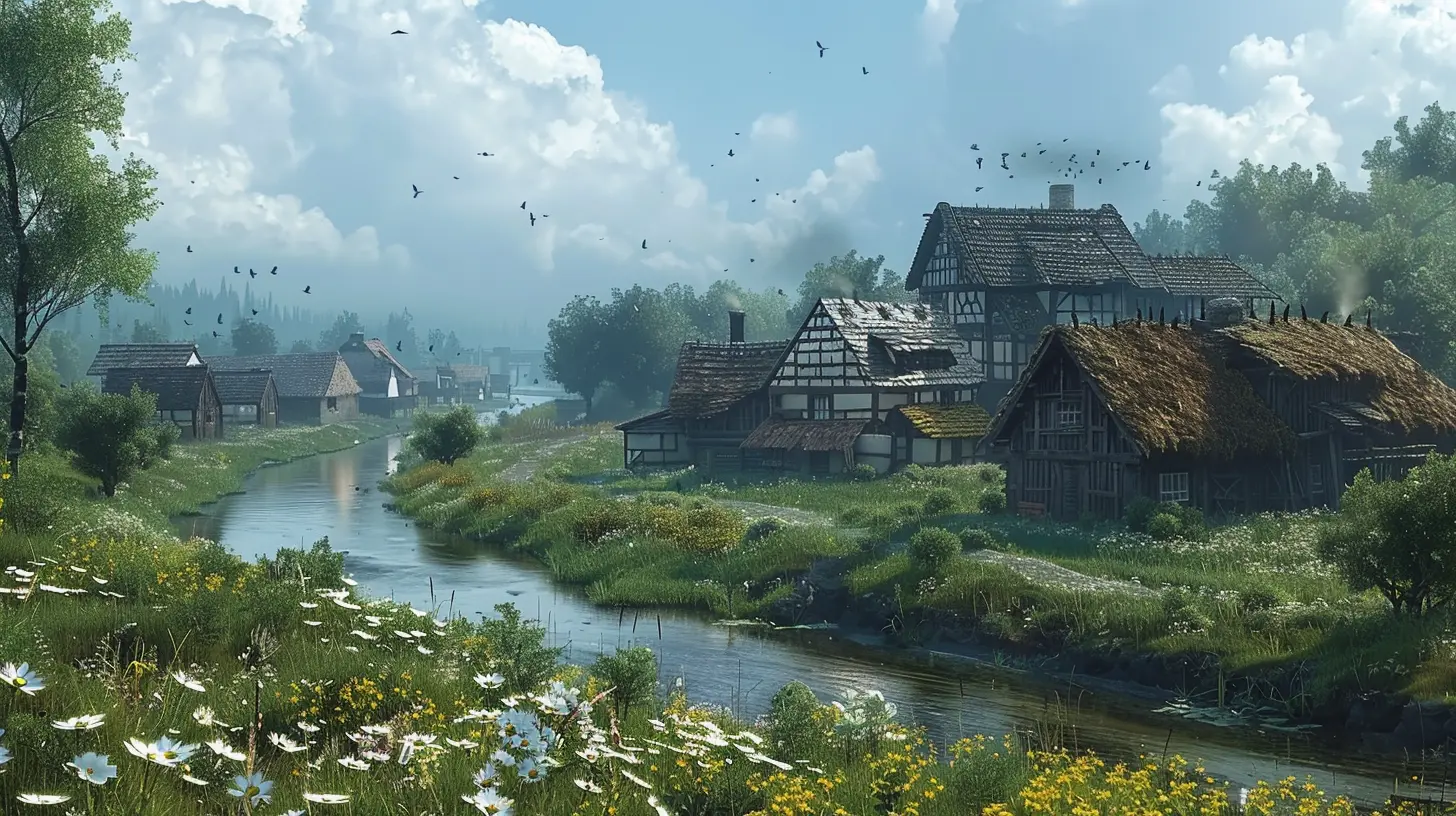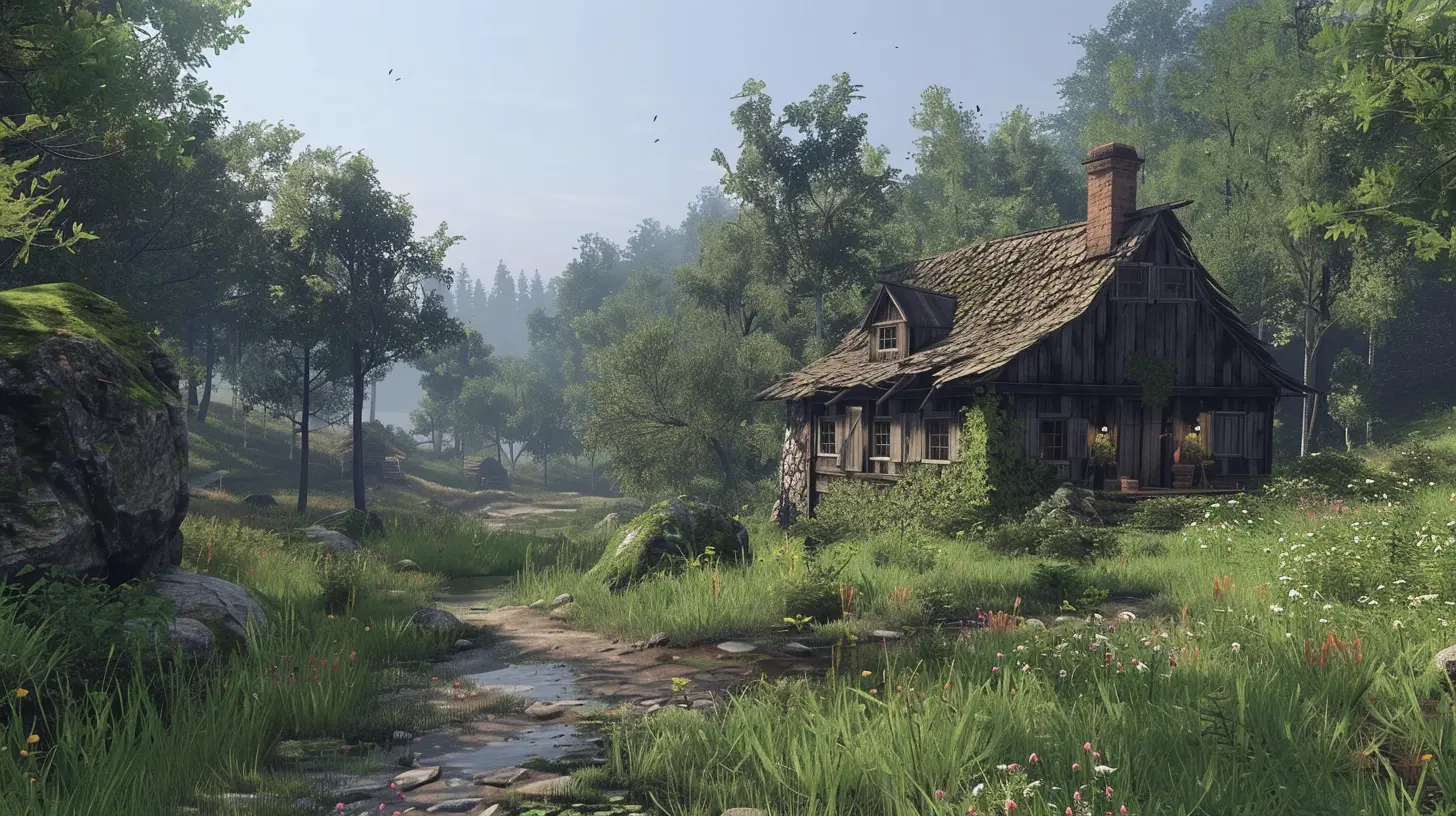How Game Studios Research to Build Realistic Worlds
29 October 2025
Ever stepped into a game and thought, "Wow, this feels real"? Maybe it was the crumbling ruins in an ancient city, the way characters interacted with their environment, or even how the weather shifted during your journey. That sense of immersion doesn't just happen by accident—it's built on a ton of research.
Game studios are like digital archaeologists, scientists, and artists rolled into one. They don’t just create worlds; they build them with layers of history, culture, geography, and emotion. But how exactly do they do that?
Grab a snack and settle in—because we’re diving into how game studios research to build realistic worlds that feel just as alive as our own.
Table of Contents
- Why Realism Matters in Games- Step 1: Conceptual Research – Where It All Begins
- Step 2: Digging into the Details – Historical and Cultural Studies
- Step 3: Real-World Scouting and Field Work
- Step 4: Collaborating with Experts
- Step 5: Studying Human Behavior and Movement
- Step 6: Physics and Environmental Modeling
- Step 7: Feedback Loop – Playtesting and Iteration
- Famous Games That Nailed Realistic Worldbuilding
- It’s Not Just Research – It’s Passion

Why Realism Matters in Games
Let’s get one thing straight—realism in games isn’t just about how good the graphics are. Sure, ultra-HD visuals are impressive, but immersion is about how believable the world feels. Can the player get lost in it? Does the environment support storytelling? Is the world cohesive and alive?Realistic worlds pull players in emotionally and mentally. They let you feel like you’re actually living in that moment—whether it’s roaming through a dystopian wasteland, navigating a medieval kingdom, or flying across alien planets.
And to create that level of detail, game developers have to do their homework. A lot of it.
Step 1: Conceptual Research – Where It All Begins
Before any code gets written or art gets drawn, game worlds start in the minds of developers. This is where conceptual research kicks off.At this stage, teams ask big questions like:
- What kind of world are we building?
- Is it Earth-based? Fantasy? Sci-fi? Historical?
- What emotions should the world evoke?
They brainstorm influences, create mood boards, and compile references from books, movies, and even architecture or urban planning. Think of it like writing the setting for a novel—you need to know the vibe before you build the structure.
Example:
The creators behind The Witcher 3 started by grounding their world in Slavic mythology. They didn’t just wing it—they pulled stories from folklore, legends, and cultural traditions to build something that felt ancient and raw.
Step 2: Digging into the Details – Historical and Cultural Studies
Once the team has a foundation, it’s time to dive deep.If the game is set in a real-world time period (even loosely), the studio studies everything from clothing to speech patterns, food, politics, and even religion.
Historical games like Assassin’s Creed are famous for this. Ubisoft literally hired historians and cultural consultants to ensure they captured cities like Florence, London, and Ancient Egypt accurately. Not just the buildings—but the lifestyles and attitudes of those times.
That’s right:
Even the graffiti on some game walls is historically accurate! Some devs even translate old languages to make it feel more authentic.Step 3: Real-World Scouting and Field Work
Okay, this part’s pretty cool. Many game studios actually send out teams—like real explorers—to scout real-world locations.They take:
- Photos
- Video footage
- Drone flyovers
- Audio samples (birds chirping, water streams, wind through trees)
These are then imported into the game engine and used as references to create lifelike environments.
Remember Red Dead Redemption 2?
Rockstar Games sent research teams across the American West to capture the essence of forests, mountains, and towns. That's why every inch of that game feels lived-in and natural.Step 4: Collaborating with Experts
You know that saying, “Jack of all trades, master of none”? Game devs know it too. That’s why they bring in specialists to help them get things right.Depending on the game’s genre and setting, studios may work with:
- Historians
- Military advisors
- Weapon specialists
- Architects
- Scientists
- Anthropologists
These experts make sure the world isn’t just pretty—it’s accurate. For example, in a war game, devs want the recoil of a rifle to feel real. In a fantasy RPG, they may bring in linguists to create entire fictional languages (yeah, that’s a thing).
Step 5: Studying Human Behavior and Movement
Creating a realistic world isn’t just about landscapes—it’s also about people.Game studios study how humans act, talk, and move. They use:
- Motion capture (mo-cap)
- Facial scanning
- Voice actors
- Interviews with real people in similar roles (e.g., soldiers, medics, criminals)
These are layered onto characters to make them feel alive. NPCs (non-playable characters) don’t just stand around like mannequins anymore. They interact, react, and live their own little lives inside the game.
Step 6: Physics and Environmental Modeling
Now here’s where the science comes in. Realistic worlds need to act real too. That means using advanced simulations to recreate:- Gravity and weight
- Weather systems
- Destruction (like collapsing buildings or breaking glass)
- Water dynamics
- Light and shadow behavior
Game engines like Unreal and Unity help with this, but devs still spend countless hours tweaking and testing to make sure the world behaves as expected.
Fun Fact:
In The Last of Us Part II, Naughty Dog developers worked for months on the animation of backpacks—how they bounce, sway, and interact with the character’s body. That’s the level of detail we’re talking about.Step 7: Feedback Loop – Playtesting and Iteration
Research doesn’t stop once the world is built. Nope—it’s a constant cycle.Studios regularly playtest their games with internal teams and even external players. They ask:
- Does the world feel believable?
- Are there inconsistencies?
- Does the environment support gameplay?
They use this feedback to tweak textures, sounds, lighting, and even minor design elements like signage or terrain.
This part often happens right up until the game ships. That’s how dedicated these teams are to getting it right.
Famous Games That Nailed Realistic Worldbuilding
Let’s shout out a few games that went above and beyond with their research.1. Assassin’s Creed Series
Each entry is rich with historical detail, thanks to deep collaboration with historians. You can literally walk through a "virtual museum" of past civilizations.2. Red Dead Redemption 2
Arguably one of the most immersive open-world games ever. The attention to detail—from wildlife behavior to horse care—is mind-blowing.3. Hellblade: Senua’s Sacrifice
Ninja Theory worked with neuroscientists and people who actually have psychosis to accurately represent Senua’s mental health struggles. It’s powerful and hauntingly realistic.4. Microsoft Flight Simulator
Wanna fly around the globe using real-world maps and weather patterns? This game uses actual satellite data—yeah, it’s basically Google Earth with jet engines.It’s Not Just Research – It’s Passion
Let’s be honest: game devs don’t go through all this trouble just to impress players. They do it because they’re passionate about storytelling, design, and the craft of building worlds.They’re part historians, part scientists, part magicians. They blend cold hard facts with imagination to create experiences that move us, challenge us, and stick with us for years.
So the next time you're admiring a sunset on a digital mountaintop or wandering through a bustling city in a game—just remember the blood, sweat, and Google searches that went into making it feel so real.
all images in this post were generated using AI tools
Category:
Realism In GamesAuthor:

Lana Johnson
Discussion
rate this article
1 comments
Naomi Cross
This article provides an intriguing look at the meticulous research game studios undertake to create immersive worlds. The blend of cultural insights, historical accuracy, and technological advancements showcases the dedication to realism. It’s fascinating to see how these elements enhance player experience and storytelling in gaming. Well done!
November 1, 2025 at 4:43 AM

Lana Johnson
Thank you for your thoughtful comment! I'm glad you found the research process and its impact on player experience intriguing. Your support means a lot!


